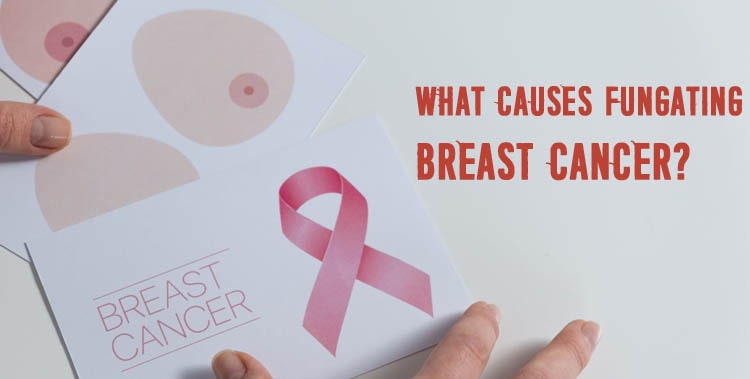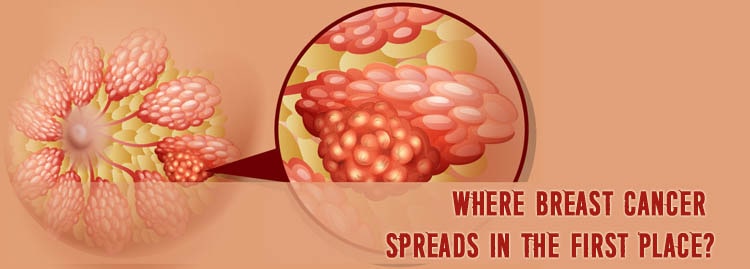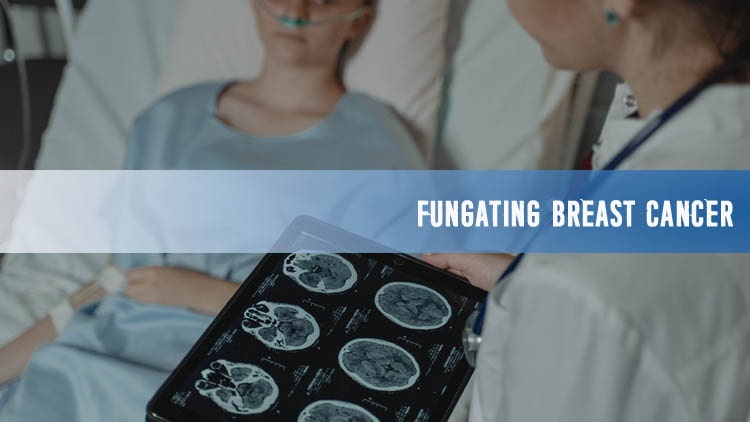Breast cancer is one of the common types of carcinoma that affects people, particularly women. I have a cancer survivor in my family, and I know the patient’s ordeal. And fungating breast cancer is one of the worst things that can happen to anyone.
When someone is affected by this disease, cancer would appear in the patient’s body. It is a rare form of carcinoma, so most patients don’t have to go through it. But once it happens, how do you deal with it?
So if you want to learn about this type of breast carcinoma, you have come to the right place! Let me give you all the detailed information about this disease so you can handle it gracefully if you ever have to face it.
What does Fungating tumor mean?
The fungating tumor or cancer is commonly known as ulcerating cancer. It happens in the cases of cancers that occur close to our skin.
When cancer is developing under our skin and breaks through our dermis, it creates a wound. You can see these wounds mostly in breast carcinoma patients, and doctors call them fungating cancer wounds.
What is a Fungating breast tumor?

What is a Fungating breast tumor
As breast cancer develops under the skin, the tumor may penetrate our skin, causing a wound—the growing tumor under the skin blocks and damages our blood vessels.
This damage reduces the oxygen supply in that area, which results in the death of tissues underneath. When the case turns into a severe one, the wound may become infectious in a matter of days.
However, this type of carcinoma wound is relatively rare, and most patients don’t suffer from it at all. But patients with melanoma, head and neck cancer may have it, along with those who have breast cancer.
Here is a list of symptoms that help you to recognize fungating breast tumors.
- Leakage and Discharge
- Bleeding and pain
- Itching
- Unpleasant odor
What causes Fungating breast cancer?

What causes Fungating breast cancer
Fungating breast cancer can cause for two different reasons. These reasons are
- From the primary tumor
- From the secondary tumor
Fungating Breast Carcinoma from Primary Tumor
A primary tumor is the one where cancer started in the first place.
Fungating cancer starts from a primary untreated tumor most of the time, so whenever you see something out of the box happening in your breast area, consult a doctor immediately.
When breast cancer remains untreated for several months or years, the tumor may go upward and tear the flesh apart to rise. This risen tumor creates a sore or ulcer on your skin surface, and it becomes a little harder to cure this problem.
Sometimes patients feel awkward or become scared when they see any lump or mass forming in their breast. But no one should be afraid to talk about it; hence, breast awareness is a necessity these days.
Fungating Breast Carcinoma from Secondary Tumor
A secondary tumor is the one that has spread from the primary one. Sometimes when tumors rapidly grow, it may start to spread in other areas such as lymph nodes of armpits or necks.
It is an advanced stage of breast cancer, so you may need to care about this situation.
When carcinoma reaches this stage, it’s already too late to cure it entirely. Even after proper treatment, cancer can return to your body.
Therefore, you need to do breast screening once in a while to avoid further spreading the tumor and prevent fungating carcinoma.
If you have any fungating wound in your body, consult a doctor as soon as possible. When a cancer patient suffers from this condition, it’s already late, so you should act on treating it without wasting much time.
About the Bilateral Breast Cancer
Where Breast Cancer Spreads in the First Place?

Where Breast Cancer Spreads in the First Place
In the advanced stages of breast cancer, the disease starts spreading to other parts of your body. The doctors will determine the stage of your cancer by inspecting how far it has spread.
If it has spread quite far from your breasts, it is considered as “metastatic.”
Let me tell you some of the most common areas where your breast cancer spreads.
Lymph Nodes
Your breast cancer will reach your lymph nodes situated in your breasts, under your armpits, and collarbone at the earlier spreading stage. But if your cancer has spread far from these areas, the doctors will start calling it “metastatic.”
After you are diagnosed with breast carcinoma, your doctor will check the nearest lymph nodes for this disease.
As the lymph system helps to drain bacteria or other harmful things from your body, you will start seeing the symptoms of cancers in these areas.
Bones
When breast carcinoma spreads to your bone, the first symptom you will feel is the pain. This disease can affect any bone in your body, especially the ones situated near your breasts.
In severe cases, the bones become so fragile that it might break! However, you can avoid this condition by getting proper treatment.
Liver
If your liver is affected by breast cancer, you will feel pain in your tummy, and it will never go away. You will feel bloated, start losing your appetite and weight.
Additionally, the white portion of your eyes will turn yellow as jaundice will be affecting your body.
Lungs
Breast carcinoma can reach your lungs, and it will start causing fluid buildups. Coughing, short breathes and chest pain is the most common symptoms of this situation.
Brain
Even for this metastatic stage of breast carcinoma, spreading to the brain tissue is pretty rare. A patient affected by it will feel severe headache, numbness, frequent seizures, or start acting differently.
However, when your breast cancer reaches your organs, such as the lungs, it doesn’t mean that you have lung cancer. If you take the proper measurement at the earlier stage, you can avoid this health condition successfully.
How long can you live with a Fungating tumor?
As I stated before, fungating breast tumors are rare; only 5% of patients suffer from this condition.
But this occurs in the advanced stages of breast carcinoma; the patient’s life expectancy is very short. They can survive up to six to twelve months with this condition.
Final Verdict
We already know that prevention is better than cure, so we must act on it. Proper awareness is the key to avoid this disease, and if we take precautions, fungating breast cancer can be avoided successfully.
And don’t forget to get your breast examined by a professional and learn how to do self-screening for a healthy life.
We talk about more Cancer
How has the Study of Mitosis Affected Scientists’ Knowledge of Cancer?, How Do Cancer Cells Differ from Normal Cells, How to Make a Cancer Man Miss You, Bilateral Breast Cancer

